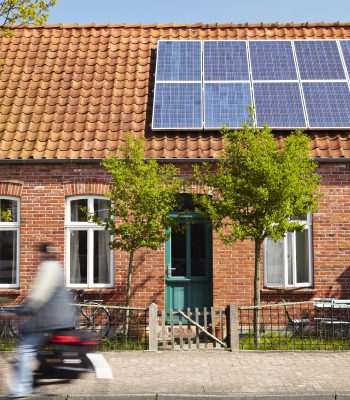Description
Local governments can help provide financial incentives and funding in support of green investments. Such support schemes can include targeted subsidy schemes like the Seoul solar panel programme. It can further include the setting-up of municipally owned or funded green banks or the setting-up of investment funds (for example, the Melbourne green investment fund) that can provide green loans or dedicated risk-sharing facilities for private banks. Local authorities may also work with local banks in order to facilitate green lending solutions with little or no financial contribution from the city.
Targeted financial support schemes can be developed to support fuel-poor households and small and medium-sized enterprises (SMEs). Providing financial support to fuel-poor households can expand their access to sustainable energy and build climate resilience. Governments can also use green loans, tax incentives or subsidies to help SMEs finance low-carbon solutions or develop green technologies and business models.
One example is Frederikshavn, Denmark, which developed specific soft loans for the energy renovation of housing to meet its climate change targets. A new product was developed by the municipality in agreement with local banks featuring lower interest rates and a longer maturity period relative to typical market conditions. The municipality does not allocate any funds to the financing scheme. Instead, soft loans are provided by the partner banks that bear all the risk. They run a creditworthiness check of homeowners, to decide who gets a loan and under what conditions

Resource implications and key requirements
Providing financial incentives will require budgetary commitments and may be administratively demanding for the local government. Significant technical capacity will also be required to identify how to configure and apply incentives. Incentives can target lower income brackets of the population to address social equity concerns associated with energy poverty. Both the central and local policy frameworks need to accommodate the setting-up of incentive and funding schemes by local authorities.

Potential private-sector participation
Local governments can work with commercial banks to provide financial incentives, therefore sharing or shifting the financial burden from the public to the private sector.

Implementation obstacles and solutions
The provision of direct financial support is financially demanding for local governments and can target fuel-poor homes.[1] It is good practice to undertake a comprehensive cost and benefit analysis of retrofitting to zero carbon for all households that are in fuel poverty and provide targeted funding for these homes. One of the first programmes to tackle energy poverty was the Warm Front programme in the United Kingdom. A total of 2.3 million households received assistance from the scheme. Grants were offered for improvements such as loft insulation, cavity wall insulation and heating system improvements.[2]
Governments need to make sure that targeted funding and other financial incentives are allocated and used appropriately. One such measure would be to establish and implement systems for monitoring and evaluating the use or misuse and impact of certain financial support schemes. Another important tool would be gender budgeting, which helps governments make gender-informed resource allocation and ensure gender equality. For instance, gender budgeting can prevent households headed by women from being excluded from energy renovation programmes.
The success factors associated with energy efficiency measures include gaining and maintaining consumer trust, an effective communication and marketing strategy, training and qualification schemes to ensure that worker qualifications keep pace with the technical complexity of buildings and the targeting of trigger points such as household renovations or sales.[3] The provision of financial incentives and favourable financing should only come after energy efficiency building codes have been enacted and adequate enforcement and compliance mechanisms are in place for building construction and retrofits.

References
[1] National Assembly for Wales (2018), “Low Carbon Housing: the Challenge”, Climate Change, Environment and Rural Affairs Committee, August 2018.
[2] UK Parliament (2013), “Warm Front Scheme”, Commons Research Briefing SN06231, House of Commons Library, August 2013.
[3] Committee on Climate Change (2016), “Next Steps for UK Heat Policy”.








